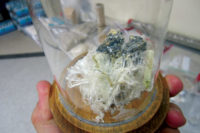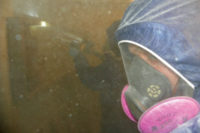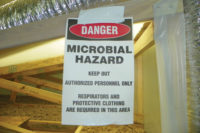Ghosts, Myths, and the Miracle Mineral Asbestos
No-see-ums and the R&R Struggle


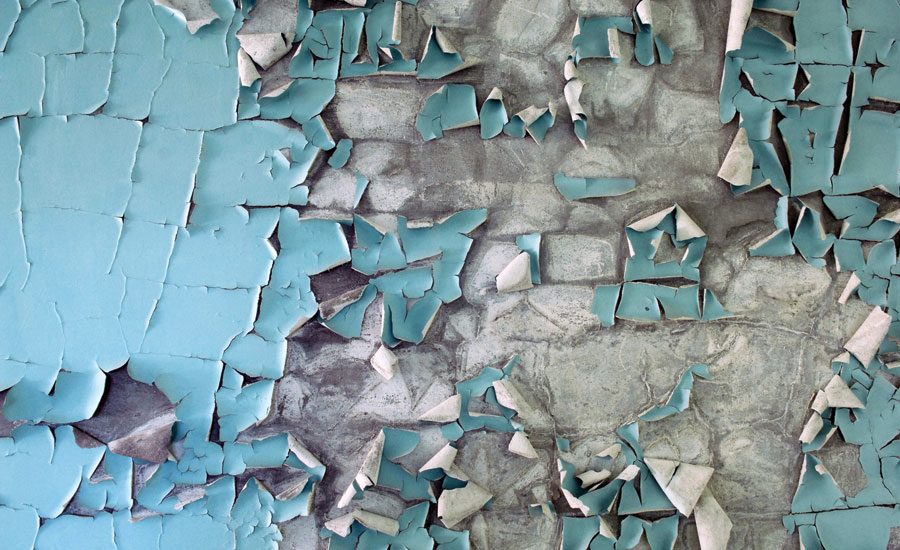
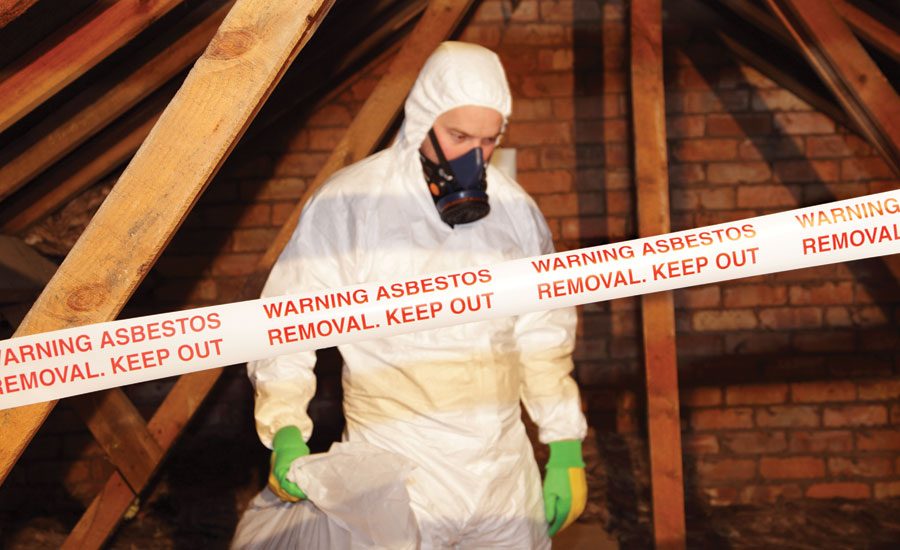




As members of the restoration and remediation (R&R) industry, we are in the business of ghost busting. On a daily basis, we battle mysterious, invisible and scary stuff. Most of our foes are imperceptible, being unseeable, untouchable and unsmellable. What’s worse, many of the clients we serve believe our undetectable adversaries are merely hocus pocus and snake oil, invented only to line our pockets with dollars. Accused of fear mongering, when we use terms like: MRSA, e-coli, Norwalk virus, mold spores, lead dust, radon, etc., we are destined to perpetually justify our work, our precautions, our time lines and our invoices. Not only do we have to contend with clients, who possess a strong dose of skepticism, but also we have to struggle with employees who suffer from too much grit, terror of losing their jobs and fear of being labeled a snitch.
You may be thinking…“Wow Derrick. You sure are a buzz kill. I have to convince cynical clients I am not a shyster, I have to encourage unwilling employees to report safety concerns and I have to deal with the actual invisible hazards at the site.” Well my friends…that is exactly what I am saying.
Good News! We are All Heroes (even if only in our minds)
I know you and I share a common trait. We all have hero complex. We derive immense satisfaction from helping others. We value protecting others in their time of distress. It is for this altruistic reason, we will continue our battle with the unseen hazards present in our built environment. We proudly suit up every day and continue fighting ghosts.
Let’s Talk About “A”
Can you name a natural, long lasting “green” building material with an impressive resume of desirable construction characteristics including:
- Historical (Used by civilization for thousands of years),
- Neat (The only natural mineral that can be woven into fabric.),
- Abundant and Local (Present on 2/3 of the Earth),
- Insulative (Thermal, acoustic and electrical),
- Resilient (Resistant to fire/heat, chemicals and biodegredation),
- Strong (Tensile strength greater than steel), and
- Cheap to bring to market (Dig it up, crush it and add it to your construction material)?
This mystery material is present in our residential and commercial building stock of yesteryear and of today. It is federally regulated throughout these great United States of America. In fact some states, counties, municipalities and fire departments regulate it far beyond the federal requirements.
Most of you have either guessed correctly from the clues above or have simply read the title of this piece. But, if you are still in the dark, I am talking about the miracle mineral, asbestos.
The term “asbestos” is actually not referring to one thing, but is instead a general term referring to six different fibrous, silicate, asbestiform minerals organized into two groups including:
- Serpentine Asbestos
- Chrysotile (White Asbestos, The most common asbestos used in the USA)
- Amphibole Asbestos
- Amosite (Brown Asbestos)
- Crocidolite (Blue Asbestos)
- Actinolite
- Anthophylite
- Tremolite
Contrary to popular belief, asbestos testing IS required in new buildings constructed today. Do your own homework, but according to the federal NESHAP regulation you are required to presume or test suspect building materials (anything that is not uncoated glass, metal or wood) in public buildings REGARDLESS OF AGE prior to disturbing them.
Asbestos, the 4-Letter Word with 8 Letters
Eating or breathing asbestos fibers is bad, as in deadly, for 10,000 people a year in the USA. The time between the first exposure and the appearance of the initial symptoms of disease is known as the latency period. Asbestos health effects are slow acting with a latency period of five to 30 or more years. Ingestion (or eating) asbestos may result in diseases like gastrointestinal cancer. Inhalation (or breathing) asbestos can result in diseases like:
- Asbestosis, a scarring of the lungs
- Mesothelioma a cancer of the mesothelia, typically the plural lining around the lungs, but can affect the pericardium of the heart or the peritoneum of the abdominal cavity
- Lung cancer
Leave it Alone
Asbestos fibers bound within building materials pose no threat to occupants. If asbestos is presumed to be present in the materials of your building:
- If it’s in good condition and not producing dust, then it cannot be eaten or breathed; therefore it poses no threat to occupants, so leave it alone.
- If it is slated for disturbance, get it tested by an AHERA Certified Asbestos Building Inspector.
- If it is damaged by rain, fire, flood or a rogue bus, get it tested by an AHERA Certified Asbestos Building Inspector.
As luck would have it. You are squarely in the business of dealing with building materials that are already disturbed (fire, flood, car crash, etc.), or you are disturbing them in order to address some other issue. Cover your bases and presume the presence of asbestos fibers in materials or get them sampled by an AHERA Certified Asbestos Building Inspector (and state certified if warranted in your locale) and analyzed at a NVLAP accredited laboratory.
Don’t get bullied by unscrupulous entities encouraging you to turn a blind eye to this subject. Savvy property owners, managers and insurance companies are aware of the requirement for asbestos testing. Insurance estimating programs, like Xactimate, even have line items for asbestos testing services.
How can R&R contractors make money if they are not an asbestos contractor?
Some R&R professionals dread asbestos. Others embrace it. Those who dread it often fear acknowledging asbestos will result in a client kicking them off the project, the adjuster never calling them again, and the delivery of “their” project to a competitor who offers asbestos services. Those who embrace asbestos understand compliance with federal asbestos regulations can provide a value added to the client, can protect their employees and yes…can increase their project dollar volume.
Here are some ideas that might let you properly consider asbestos and simultaneously stimulate your business:
- Subcontract the testing, test it yourself or refer the work.
- You could consider subcontract the testing with the customary profit and overhead mark up.
- You could upgrade an in-house team member to become your certified AHERA Asbestos Building Inspector (a 3 day course).
- Caution: Some states have additional certification requirements.
- Warning: Be careful of the perceived conflict of interest.
- Danger: In some states, the contractor is strictly prohibited by law from being the asbestos sampler.
- Look out: Check with your insurance carrier to ensure subcontracting asbestos survey or performing it in-house will not invalidate your coverage.
- You can just pass along the referral to an AHERA certified asbestos building inspector you can trust.
- You can do your work in undamaged areas.
- You can quarantine the area of disturbed material, and simply perform all your nonintrusive R&R work (perform extraction, deploy a drying system, etc.) in undamaged rooms until asbestos results are available for the damaged rooms.
- If the asbestos survey results are non-detect for asbestos fibers, then you can proceed full tilt.
- If the asbestos survey detects asbestos then you can choose one of two options:
- You can subcontract any asbestos abatement. Caution: Just be sure subcontracting the asbestos abatement will not invalidate your insurance coverage.
- You can offer in-place drying in lieu of disturbing building materials that might contain asbestos. Leaving materials in place during the drying process will require you to deploy more equipment and leave it on site for more time, which will increase project billability.
- You can take on asbestos remediation as a parallel service line.
- This is not uncommon.
- Many of the concepts (aseptic techniques, PPE, negative pressure enclosures, etc.) you may already employ in the remediation of mold, trauma scenes or sewage incursions translate well to asbestos abatement.
- You would need to gear up, which will take some homework. Venturing into any new field, particularly asbestos remediation, is actually substantially fraught with complicated with nuances. But, in brief:
- Your state may require you to be a licensed general contractor and/or a licensed asbestos abatement contractor.
- You will need to have an AHERA Certified Asbestos Contractor Supervisor (a 40 hour course) on every project during any working hours.
- Your workforce will need to consist of AHERA Certified Asbestos Workers (a 32 hour course).
- You will need a respiratory protection program (RPP) and all that it implies (training, issuance of respirators and filters, respirator fit testing, medical examinations to ensure capability to safely handle the stresses of wearing a respirator, etc.).
- You will need a command of the laws associated with asbestos remediation (EPA, OSHA, State specific, etc.).
- You will need to acquire asbestos specific insurance.
To Recap:
- Asbestos is being installed in both new and renovated buildings today.
- Asbestos is bad if you eat or breathe it.
- Federal law requires you to presume asbestos fibers are present in the materials you disturb or get certified testing to prove otherwise.
- You can consider undertaking asbestos as add-on service you offer to clients via subs or your own team.
- The devil is in the details. Please understand this article is only an introduction to the subject. It is not intended to be comprehensive, nor is it intended to be construed as business or health advice.
Looking for a reprint of this article?
From high-res PDFs to custom plaques, order your copy today!



